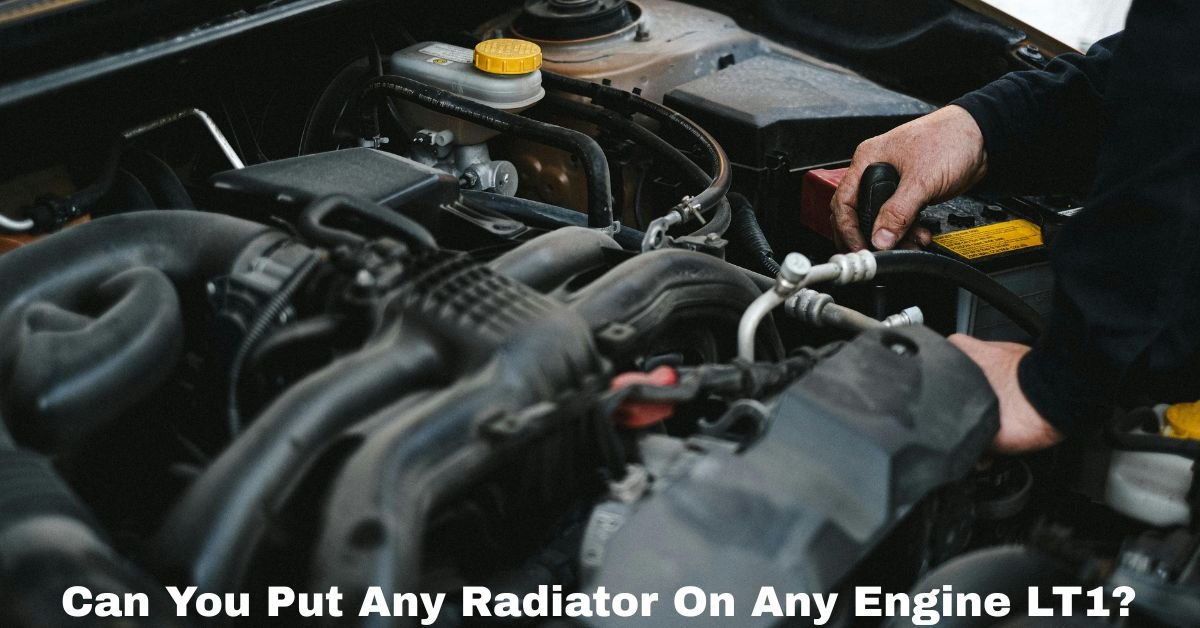The LT1 engine, especially the Gen II and Gen V variants, has earned a strong reputation in the automotive community for its performance and reliability. Found in everything from C4 Corvettes and F-body Camaros to modern Camaros and trucks, the LT1 engine continues to be a favorite for performance builds and swaps. But when it comes to cooling this powerhouse, can you just throw in any radiator and expect it to work?
The short answer is no—you can’t just install any radiator and expect optimal results. Radiators play a crucial role in regulating engine temperature, and not all radiators are created equal, especially when it comes to high-performance or swapped engines like the LT1.
Let’s break down what makes a radiator compatible with an LT1 engine and what factors you need to consider.
Can You Put Any Radiator on an LT1 Engine?
1. Cooling Capacity and Core Size Matter
One of the most important factors when selecting a radiator for an LT1 engine is cooling capacity. LT1 engines, particularly the older Gen II versions from the 1990s (used in Camaros, Firebirds, and Corvettes), are known to run hot due to their reverse-flow cooling system. That means coolant first cools the heads before it reaches the block, which is beneficial for performance but puts more demand on the radiator.
Installing a small or underperforming radiator—say, one designed for a 4-cylinder daily driver—won’t provide adequate cooling. This can lead to overheating, which is one of the fastest ways to damage an LT1.
Look for radiators with at least a 2-row aluminum core, though many builders recommend a 3-row or larger core, especially in warmer climates or high-performance applications.
2. Inlet and Outlet Location Compatibility
Radiator hose routing is another key compatibility issue. The LT1 has specific requirements for the placement of inlet and outlet ports. Without bespoke fabrication, hose routing may become challenging or even impossible if the radiator has ports on the wrong side or at the wrong angle.
For instance, a radiator with the upper hose input on the passenger side and the outlet on the driver side is used in many factory LT1 applications. If you grab a radiator designed for a different engine layout, you might end up needing custom hoses or adapters, which adds complexity and cost.
3. Transmission Cooler Considerations
Are you running an automatic transmission? If so, you’ll need a radiator that includes an integrated transmission cooler or be prepared to install an external one. Not all radiators come with this feature, especially those designed for manual transmission vehicles or universal applications.
Many high-performance LT1 swaps benefit from an external trans cooler anyway, but it’s something to consider when selecting a radiator.
Must Read: What Happens When You Put Gas In A Diesel Engine?

4. Mounting and Size Constraints
Another factor is fitment. Even if a radiator theoretically has the cooling capacity and correct hose location, it might not physically fit in your engine bay. Whether you’re dropping an LT1 into a classic car, a custom build, or replacing the stock unit in an F-body or B-body GM car, dimensions matter.
Measure your available space and compare it to the radiator’s dimensions—including height, width, and thickness. Some universal radiators might require modifying the core support or fabricating custom mounts.
5. Fan Compatibility
Cooling fans go hand-in-hand with your radiator. The LT1 came stock with both mechanical and electric fans in various applications, and if you’re upgrading the radiator, it’s often smart to upgrade to a more efficient electric fan setup.
Not all radiators are drilled or tapped for fan shrouds, sensor bungs, or temperature switches, so make sure the radiator you choose supports whatever cooling strategy you’re running.
Final Thoughts: Choose the Right Radiator for the Right Job
While it’s tempting to grab a universal radiator from a catalog or a cheap aluminum unit online, it’s important to match the radiator to the needs of your LT1 engine. The right radiator should have:
- Adequate cooling capacity (especially for modified engines)
- Correct inlet/outlet configuration
- Proper fitment for your vehicle
- Provisions for fans and possibly a transmission cooler
If you’re building a custom car or performing an LT1 swap, it might be worth investing in a radiator specifically designed for LT1 conversions. Companies like Griffin, Be Cool, Mishimoto, and Frostbite offer direct-fit options that take the guesswork out of compatibility.
So, no—you can’t just run any radiator on an LT1 engine. But with the right research and parts, you can keep your LT1 running cool and performing strong for years to come.
